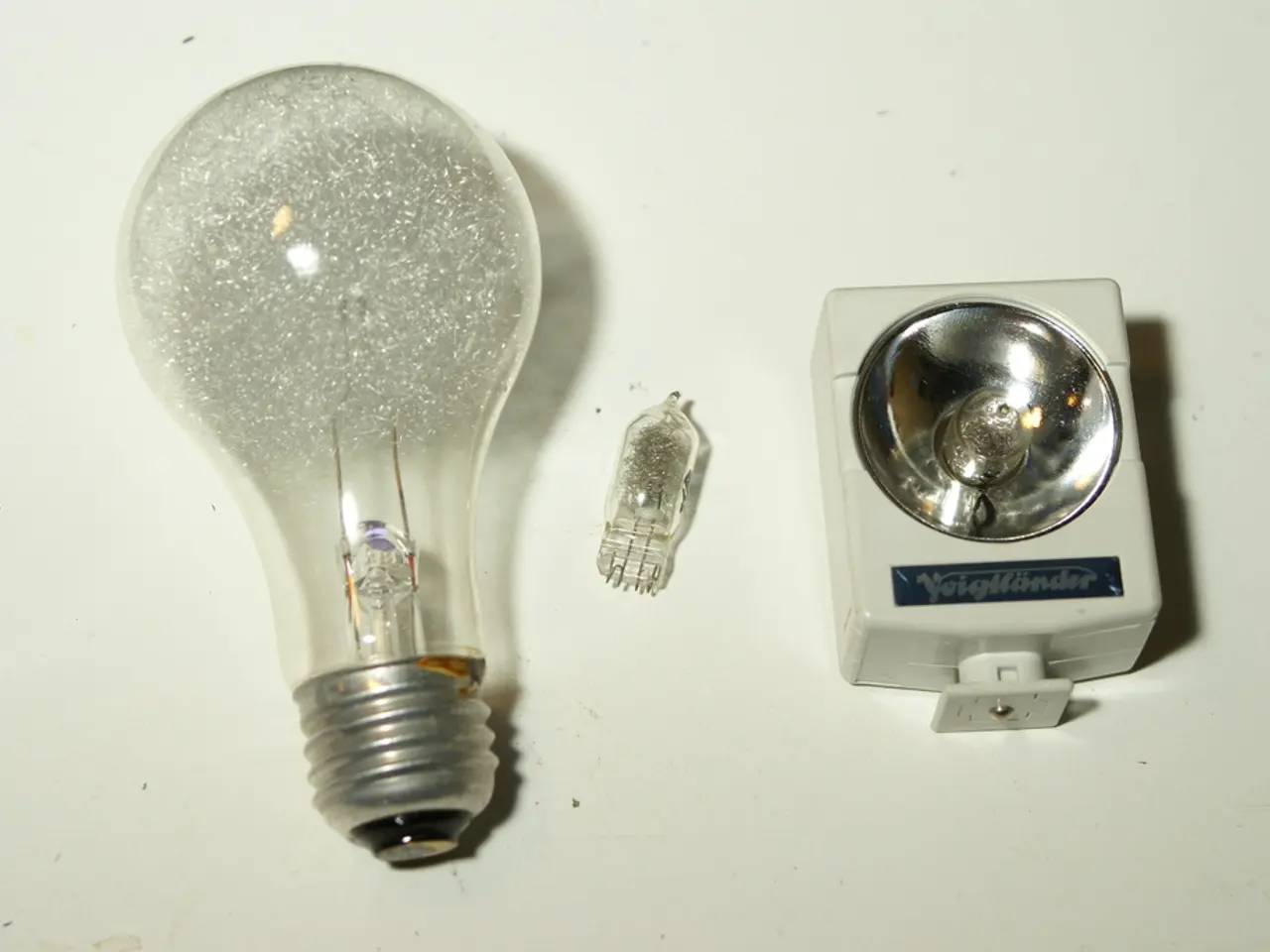Revamping a Dwelling for Alzheimer's Patients: The Vital Role of Illumination
================================================================
A dementia-friendly home is designed to provide a safe, comfortable, and familiar environment for individuals living with dementia. One crucial aspect of creating such a home is the use of appropriate lighting. Here are some key practices to consider:
Maximize Natural Daylight
Maximizing natural daylight, especially in the morning and early afternoon, is essential for a dementia-friendly home. Heavy curtains can be replaced with light-colored, sheer fabrics to reflect daylight indoors. Regularly clean windows and keep outside foliage trimmed to increase light penetration.
Soft, Warm Lighting in the Evening
In the evening, soft, warm lighting is recommended to promote a calming environment that signals it is time to rest. This can help improve sleep patterns.
Avoid Sudden Changes in Brightness
Sudden changes in brightness between rooms or overly bright lights at night can cause disorientation or anxiety. It's best to avoid these to maintain a consistent and comfortable environment.
Install Nightlights
Nightlights in hallways and bathrooms can support safe navigation during the night, reducing the risk of falls and improving orientation.
Consider Dimmer Switches
Dimmer switches allow easy adjustment of light levels throughout the day according to needs and can avoid dark spots or shadows that may increase confusion or fear.
Eliminate Shadows and Glare
Shadows and glare can be misinterpreted by people with dementia and lead to falls or agitation. Using diffused lighting and avoiding high contrast reflections can help eliminate these issues.
Delineate Spaces and Pathways
Lighting can be used to clearly delineate spaces and pathways to assist with navigation and orientation. This can be combined with other design elements like contrasting colors and clutter-free areas.
In Bedrooms, Use Blackout Curtains or Heavy Blinds
In bedrooms, blackout curtains or heavier blinds can be used to darken the room at night, beneficial for those with dementia who may struggle to recognize the time of day.
Other Considerations
Using consistent lighting throughout the home can create a sense of familiarity and orientation. Opting for light shades on walls can reflect natural light and brighten up the space. To maximize natural light, ensure windows are unobstructed and clean, use light-colored curtains or blinds, and consider adding skylights or light tubes.
Using sheer curtains or blinds can allow natural light to filter in without causing glare. Indirect lighting sources such as floor lamps or wall sconces can create a softer, more diffused light that is less likely to cause discomfort or confusion.
Night lights can be installed in areas frequently used during the night to provide a gentle illumination that helps individuals navigate their surroundings safely. Installing skylights or light tubes can bring in additional natural light. Motion sensor lights can improve security, especially in areas like hallways, staircases, and entryways.
Lighting fixtures that provide a soft and diffused light are ideal, as they reduce glare and shadows, which can cause confusion and disorientation. Proper lighting can create a calming atmosphere, promoting relaxation and reducing anxiety. Strategically placing lights and using specific types of bulbs can minimize glare and provide adequate illumination for nighttime navigation.
In conclusion, good lighting is essential not only for visibility but also for supporting cognitive function, emotional well-being, and safety in people living with dementia. These lighting strategies should be combined with other universal design features such as clear floor paths and safe, adaptable environments to create the most supportive living spaces.
[1] Alzheimer's Society. (2020). Lighting for people with dementia. [online] Available at: https://www.alzheimers.org.uk/about-dementia/living-with-dementia/home-and-community/lighting-for-people-with-dementia
[2] Dementia UK. (2020). Lighting and dementia. [online] Available at: https://www.dementiauk.org/information-support/living-with-dementia/day-to-day-living/safety-in-the-home/lighting-and-dementia
[3] Dementia Australia. (2020). Lighting and dementia. [online] Available at: https://www.dementia.org.au/sites/default/files/2019-01/Lighting_and_dementia_0.pdf
[4] University of California, San Diego. (2020). Lighting for dementia-friendly design. [online] Available at: https://architecture.ucsd.edu/research/centers-programs/design-innovation/dementia-friendly-design/lighting-for-dementia-friendly-design
[5] Dementia Services Development Centre. (2020). Lighting for people with dementia. [online] Available at: https://www.dementia.org.uk/sites/dementia/files/2019-09/DSDC%20Lighting%20for%20people%20with%20dementia%20-%202019.pdf
- Incorporating science-backed practices, such as maximizing natural daylight and soft, warm lighting in the evening, can contribute to creating a dementia-friendly home.
- To improve sleep patterns and maintain a calming environment, it's essential to consider technology like dimmer switches for adjusting light levels throughout the day.
- In the realm of health and wellness, eliminating shadows and glare from lighting sources helps support mental health and reduces the risk of falls associated with aging.
- When designing a home, a lifestyle approach that emphasizes safety and cognitive function through appropriate lighting can significantly enhance the living experience.
- Home improvement techniques, such as installing nightlights and skylights, can further contribute to a dementia-friendly environment, while ensuring windows remain clean and unobstructed for maximum natural light penetration.




